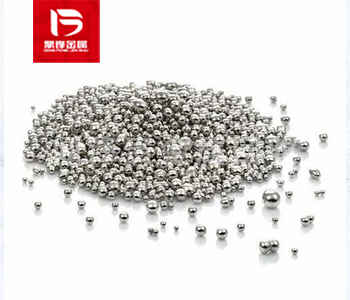
Palladium Alloy Recycling
Palladium alloy is a secondary alloy composed of palladium as the base material and other metal elements. The palladium alloy is mainly used for the purification of hydrogen. After the hydrogen is purified by the palladium alloy, the purity can reach more than 9 nines. The main alloy systems of palladium alloys are: palladium-gold alloy, palladium-silver alloy, and palladium-iridium alloy. Waste palladium alloy is one of the sources of palladium waste recycling. The sources of palladium waste recycling include palladium gold recycling, palladium wire recycling, palladium particle recycling, palladium tube recycling, palladium ingot recycling, colloidal palladium recycling, etc.
- Parameter
- Related Questions and Answers
-
Name : Palladium Alloy
-
Use : Automobile manufacturing, electronic equipment, medical equipment
-
Application Areas : Aerospace, Automotive, Electronics, Medical and Energy
-
Appearance and properties : Round, square, cylindrical, spherical
-
Settlement Method : On-site payment
-
Recycling Type : Palladium recycling
-
Door-to-door recycling:worldwide
-
Customer service: Free content testing and door-to-door recycling
Palladium Nitrate Recycling
Palladium(II) nitrate is a kind of palladium catalyst with yellow brown powder appearance, also known as palladium nitrite or Palladium(II) nitrate. Palladium(II) nitrate is mainly used as a catalyst, commonly used as laboratory analytical reagent, oxidant, and separation of chlorine and iodine. As a raw material, it can produce various palladium compounds and palladium catalysts. Palladium(II) nitrate is also widely used as the bath solution for brewing palladium plating, as well as as the intermediate system catalyst or coupling catalyst in the pharmaceutical industry.
Search : Palladium Nitrate RecyclingPalladium Acetate Recycling
Palladium acetate, also known as Palladium(II) acetate, is an organic acid salt compound of palladium, with the chemical formula Pd (CH3COO) 2. It is a colorless crystal that takes on a solid form at room temperature. Palladium acetate is soluble in organic solvents such as alcohols and ethers, but its solubility in water is relatively low., also known as Palladium(II) acetate, is an organic acid salt compound of palladium, with the chemical formula Pd (CH3COO) 2. It is a colorless crystal that takes on a solid form at room temperature. Palladium acetate is soluble in organic solvents such as alcohols and ethers, but its solubility in water is relatively low.
Search : Palladium Acetate RecyclingPalladium Salt Recycling
Palladium salts typically exhibit white or yellow crystals with good solubility. Its melting point is relatively high, about 1554 ℃, and its density is 11.99 g/cm ³。 Palladium salts have good conductivity and thermal conductivity, making them an excellent catalyst material. Palladium salts are relatively stable in air, but are easily oxidized by oxidants such as nitric acid. It can form compounds with many non-metallic elements, such as Palladium(II) sulfide and Palladium(II) chloride. Palladium salts are usually divalent, and their Oxidation state can be+2 or+4.
Search : Palladium Salt RecyclingPalladium Mud Recycling
Palladium mud is mainly composed of palladium element, usually containing small amounts of other metals and impurities. Palladium is a typical precious metal with the chemical symbol Pd and atomic number 46. It has a high melting point (1554°C) and boiling point (2963°C), good electrical conductivity and corrosion resistance, and is an important industrial catalyst. Palladium mud refers to sediment or solid residue with a high palladium content, usually in the form of gray or black mud. Palladium anode mud is one of the sources of palladium-containing waste recycling. Other sources of palladium-containing waste recycling include palladium water recovery, palladium paste recovery, palladium silver paste recovery, palladium graphite recovery, palladium slag recovery, palladium asbestos recovery, etc.
Search : Palladium Mud RecyclingProduct Details
Palladium alloy is a secondary alloy composed of palladium as the base material and other metal elements. Palladium alloy is mainly used for the purification of hydrogen gas. After purification by palladium alloy, the purity of hydrogen gas can reach over 9. The main alloy systems of palladium alloys include palladium gold alloy, palladium silver alloy, and palladium iridium alloy. The following is an introduction to the uses of various alloys:
Palladium alloy: Alloys containing less than 20% gold do not dissolve nitric acid, so this type of alloy has a high melting point and high corrosion resistance, so it needs to be used for assembling chemical utensils. A variety of palladium alloys are required for assembling electrical contacts and fusible fuses, and can also be used as solder for brazing platinum. Alloys containing 20% palladium to 30% gold are used for assembling artificial fiber membranes.
Palladium silver alloy: the corrosion resistance of an alloy containing less than 50% gold is close to that of palladium. The performance of the alloy can be improved by adding gold or platinum. Palladium alloys containing 50% gold and 10% palladium or gold can be used to manufacture corrosion resistant parts and watch cases of Optical instrument. An alloy containing 40% gold is used for making high current electrical contacts. Alloys containing 40% Ag have a low resistance temperature coefficient, higher corrosion resistance, and smaller contact resistance, so they can be used as a substitute for constantan to manufacture resistors that operate under more stringent conditions.
Palladium iridium alloy: Iridium can significantly improve the corrosion resistance of palladium. Palladium iridium alloy is used as electrical contact points. Palladium alloys are also used in jewelry, dentistry, medical devices, tap water, pen tips, and decoration.
Waste palladium alloys are one of the sources of palladium waste recycling, including palladium recovery, palladium wire recovery, palladium particle recovery, palladium tube recovery, palladium ingot recovery, colloidal palladium recovery, etc. If you have any demand for palladium containing waste recycling, please call our 24-hour service hotline. Dingfeng Precious Metal Recycling and Refining Factory has independent recycling and refining factories without intermediaries to earn price differences. Our professional technical team and customer service personnel provide one-on-one services to ensure customer privacy during the recycling process.

